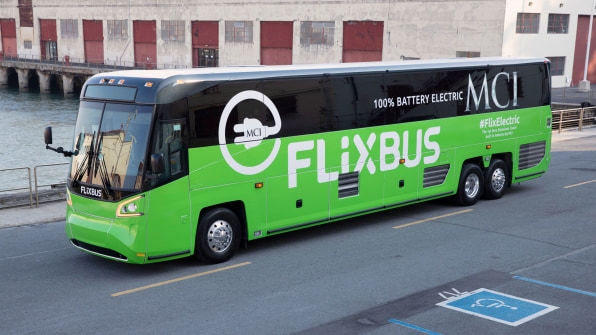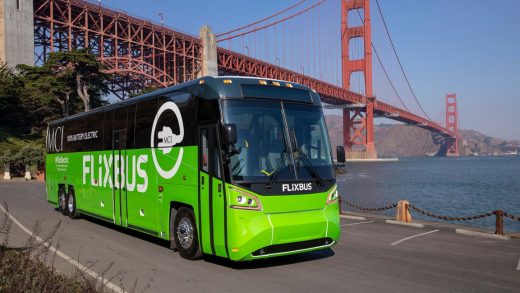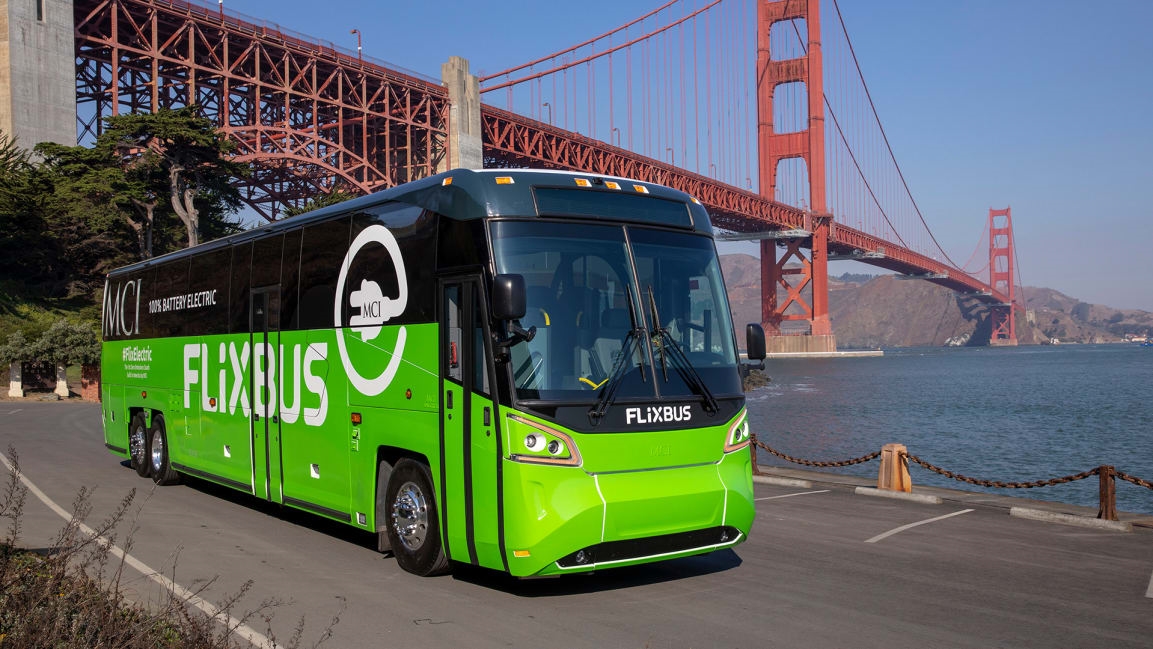Long-distance electric buses are coming to the U.S.
On Monday, a bright green electric bus drove the roughly 85 miles from San Francisco to Sacramento, charged up, and then drove back again. The test, run by the bus startup FlixBus and the bus manufacturer MCI, was the first pilot of a long-distance electric bus route in the U.S.
FlixBus, based in Germany, launched in 2013 to help tempt drivers out of cars on long-distance trips by making buses more appealing to people who might not have considered it as an option in the past. “One of the main tenets of our vision is that cars don’t fit our modern world,” says Pierre Gourdain, the company’s managing director in the U.S. “The current situation where you have 90-92% of long-distance trips that are taken by car is not sustainable.” Even if everyone traveled by electric cars, he says, there would be too much traffic.
The company uses modern buses with Wi-Fi and outlets, it has an app that lets riders track an approaching bus like an Uber ride, and offers low fares. “Let’s reinvent the way it’s delivered, let’s reinvent the way it’s sold and the way it’s branded to make the bus cool again and take people out of their cars,” Gourdain says. It now offers several routes in Europe and the U.S., partnering with bus operators who own and run the buses as it handles marketing. A natural next step, he says, was to move to electric buses.

FlixBus first launched electric bus routes in France and Germany in 2018. “They’re still being run today with the same electric buses, so we’ve seen proof and evidence of the long-distance and the long-term capabilities of a safe and reliable electric option overseas,” says Michael Kahn, head of business development at FlixBus USA. MCI, the manufacturer of the bus that the company will use in the U.S., is using pilot tests now to make any final tweaks of the design before manufacturing begins and the buses hit the road, likely in late 2020 or early 2021. Some of the first routes will include San Francisco to Sacramento, L.A. to San Diego, and Portland to Seattle. The buses have a projected range of 158 miles.
FlixBus’s parent company Flixmobility, which aims for 100% CO2-free travel by 2030, is also beginning to run trains that rely on green energy in Europe, and it’s testing other technology, including buses that run on fuel cells, making longer-distance routes possible. These longer routes can also help replace plane trips. Gourdain says that the company is already seeing an increase in bus ticket sales in some European countries where plane travel is dropping because of concerns about climate change. That will likely grow as the company continues to shift to clean technology.
“L.A. to Vegas is a great example of a route that right now is just outside the range of what the current electric bus models can do, but is a great candidate, as the technology improves, to replace a lot of folks who travel via plane,” says Kahn. “Especially when you have to deal with LAX, you really are not saving yourself that much time by going to the airport and flying. And certainly, the emissions that you’re contributing towards with a plane ticket are much more.”
Tickets for the first long-distance electric routes in the U.S. will run from $10 to $15. “Most people have never ridden and probably won’t ride in an electric car for a long time because they’re still a bit out of range price-wise for a big part of the population,” says Gourdain. “And we were thinking that for many people, their first experience of clean travel will be in an electric bus. In a way, it’s really the electric means of transportation for the 99%.”
(34)



